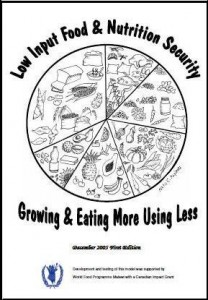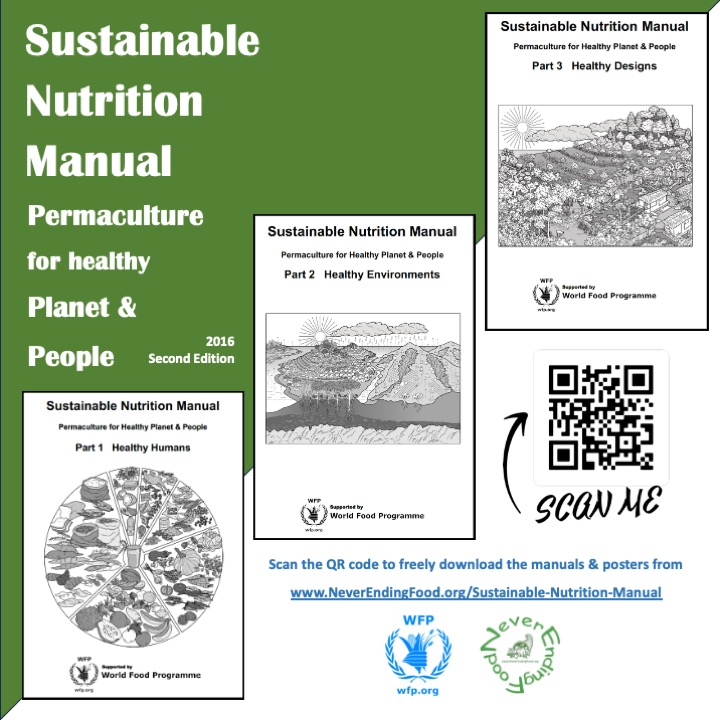
The second edition of the Sustainable Nutrition Manual: Permaculture for Healthy Planet & People (SNM PPP) was endorsed by Malawi’s Agriculture Technology Clearing Committee (ATCC) in 2016.
Enjoy using these resources and share your experiences back with us, as listed in the manual: the Ministry of Agriculture, the funders (WFP), the author (Stacia) and/or on the social media sites highlighted in the manual. We have a Sustainable Nutrition Manual Facebook Group as well.
Users The manual is being used by partners in Malawi, the region and the world that work in health, agriculture, education and general community development in sites such as Clinics, Nutritional Rehabilitation Units, Early Childhood Centres, Schools, Colleges and various Food Security, Nutrition and HIV support programmes. Many people have used the manual to eat better and raise more food more easily.
Share freely! About 10,000 copies of the manual have been printed in Malawi. We encourage organizations and individuals to print and use their own copies as needed, there is no copyright as long as you are sharing freely / at cost. It is one of the main principles of Permaculture, “Observe, Learn, and SHARE!”. We would like to get this information out to as many people and groups as we can who are interested in applying Permaculture principles to their lives and in their work.
Below you can freely download the SNM PPP in 3 parts as well as shorter flyers extracted from the manual. Or you can visit the shared google drive for everything in one place: SNM PPP manuals, flyers, posters of different sizes, individual drawings, and the 2005 version of the manual which has a lot of teaching outlines, and session activity ideas.
SNM PPP Manual:
Links to SNM PPP Flyers:
- Food security needs – ALL Food Groups
- SNM PPP Flyer Malawi Food List: Indigenous & Foreign
- SNM PPP Flyer 01 – AgNut Diet
- SNM PPP Flyer 12 – Cooking Energy
- SNM PPP Flyer 13 – Food Preservation
- SNM PPP Flyer 18-20 Soil and Compost Basics
- SNM PPP Flyer 20 Compost Basics
- SNM PPP Flyer 21 Composting toilets
- SNM PPP Flyer 22 – Malawi Floods Building Back Better
- SNM PPP Garden Blueprint created for Malawi Peace Corps Volunteers
Links to SNM PPP A2 Posters
- Digestive system A2
- Nutrient village A2
- Unbalanced & Balanced meals A2
- Malawi 6 Food groups A2
- Meals & snacks A2
- Nature cycle A2
- Soil formation A2
- Compost A2
- Water Cycle A2
- Water Table A2
- Zones A2
- Zone 1 – Gardens A2
- Zone 2 – Orchards A2
- Zone 3 – Fields A2
- Zone 4 – Forests A2
- Solar Cooker
A4 SNM PPP Posters available in the Google Drive
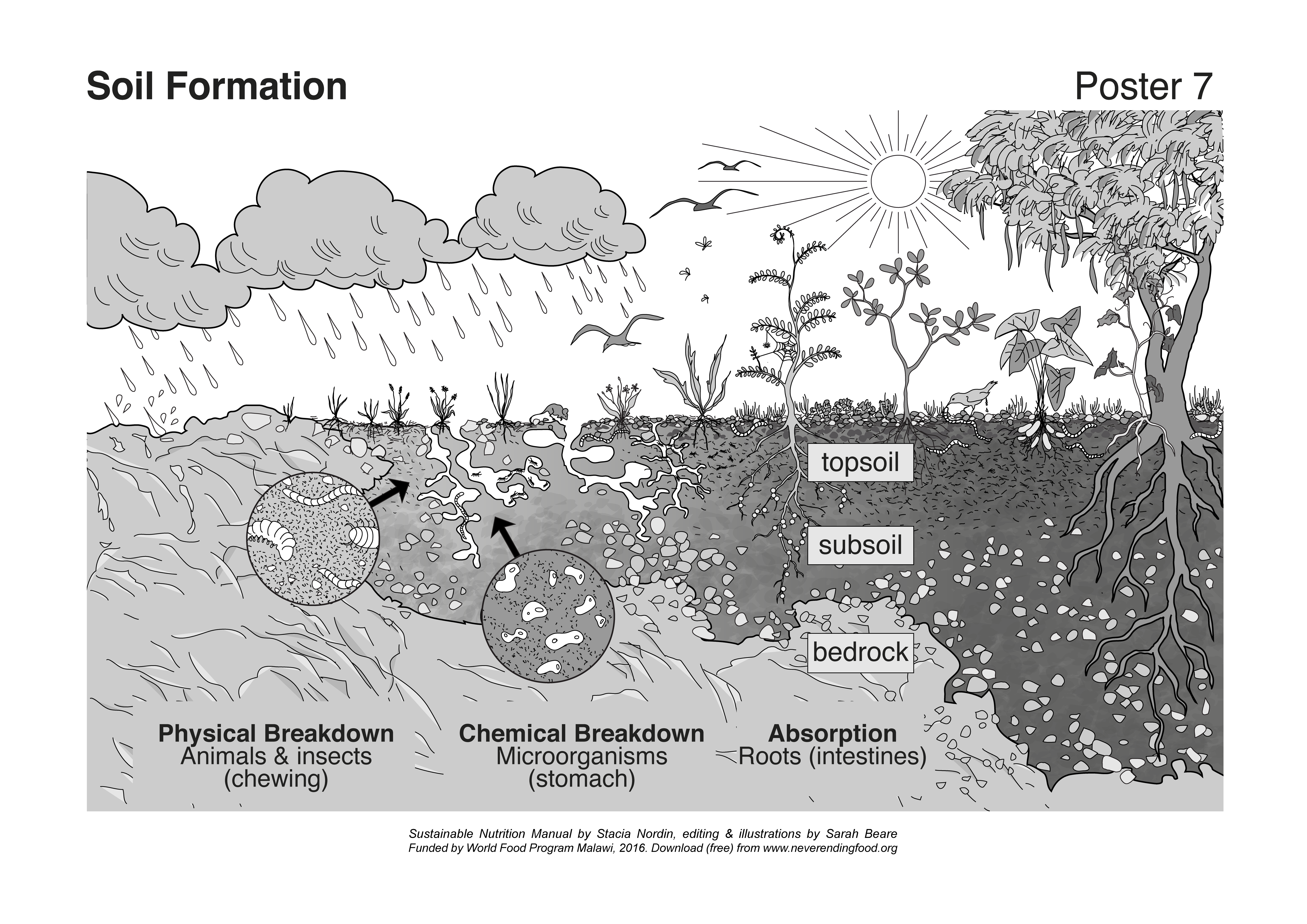
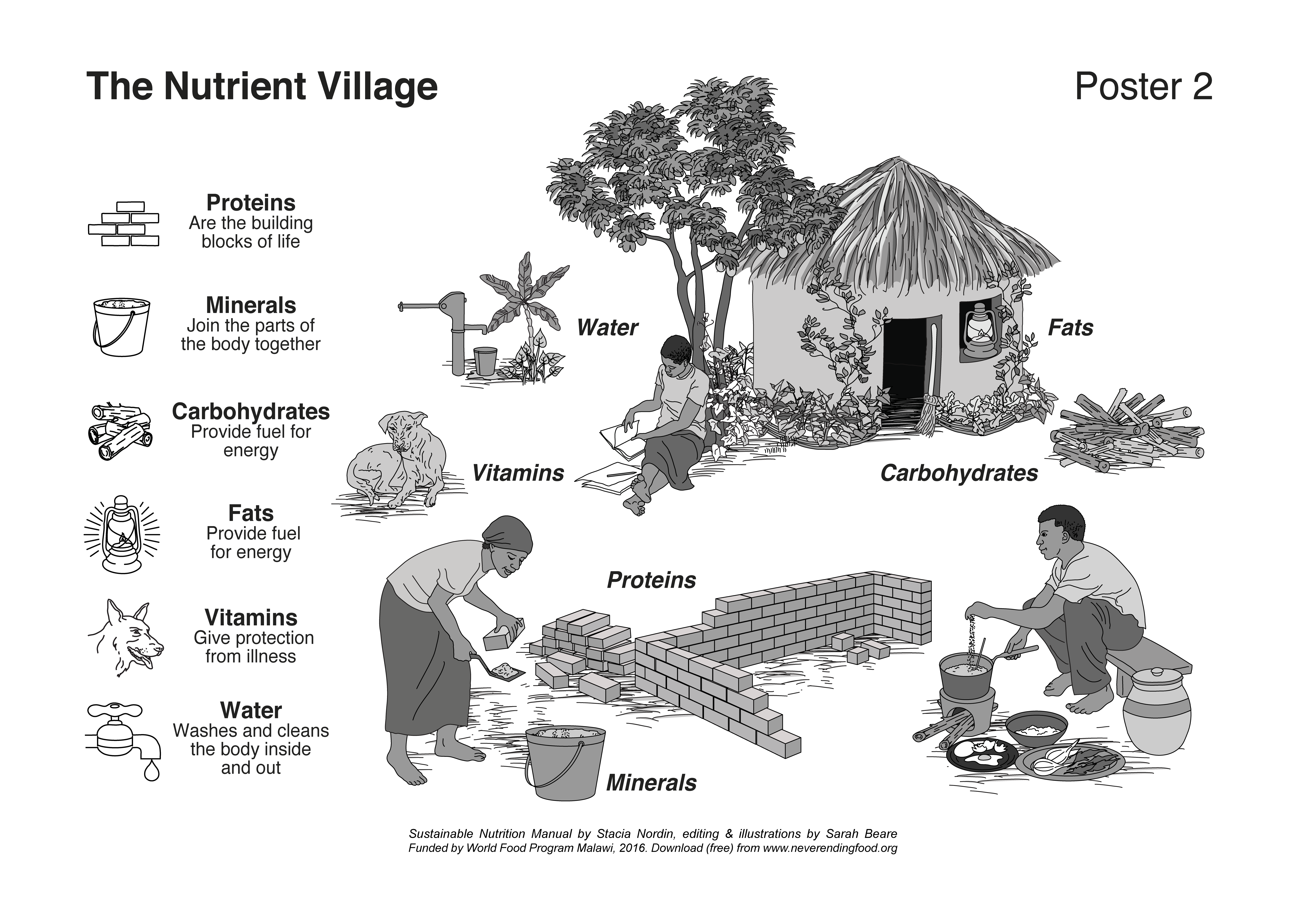
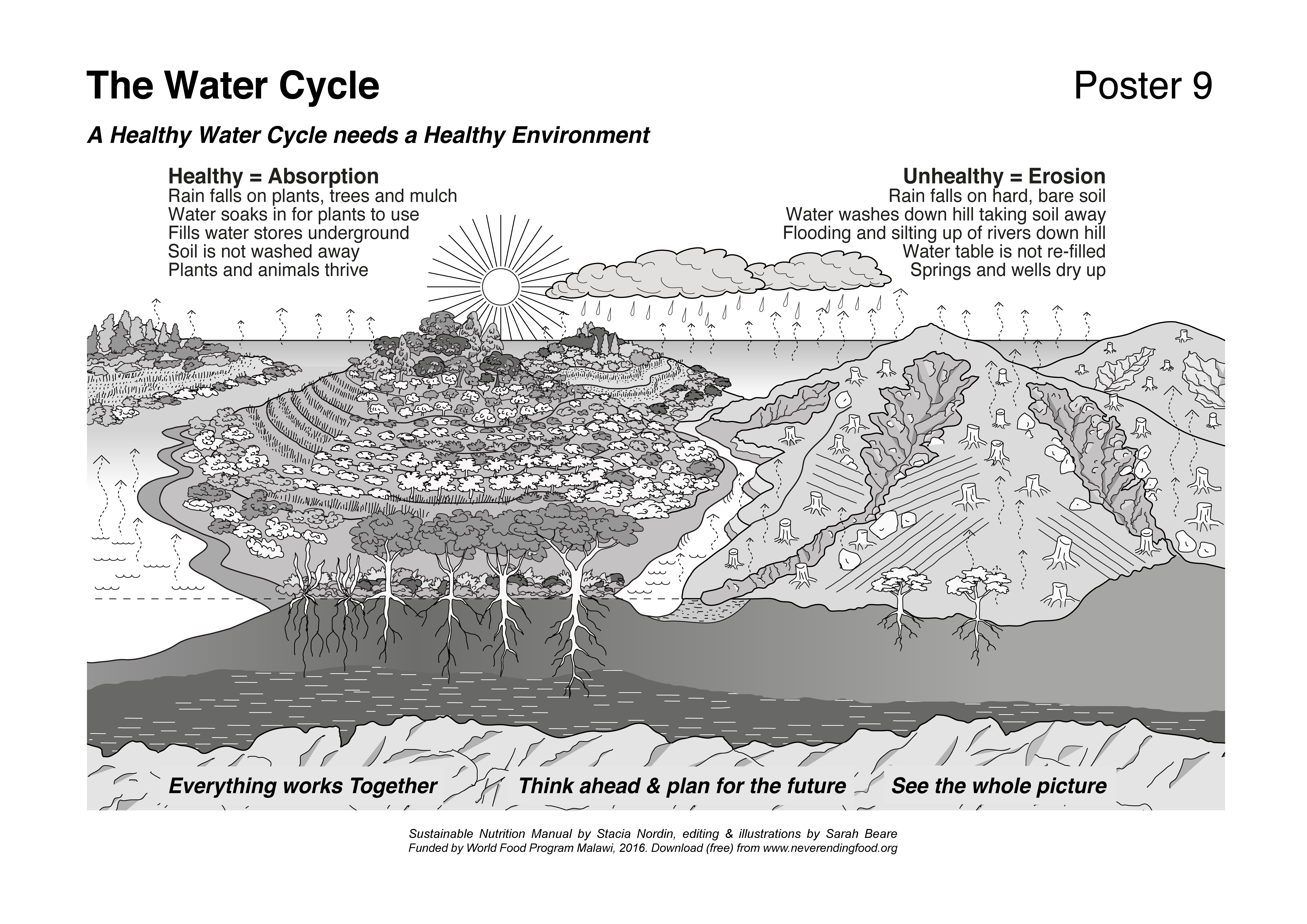
The history of the SNM:
In 2005…
Stacia worked with the World Food Prgramme (WFP) in Malawi to help assist relief and donor agencies to look beyond food aid and start focusing on sustainable food programmes. As food insecurity and malnutrition have become chronic problems in Malawi, so too have shipments of food aid (usually in the form of maize). In many instances of extreme shortages or disasters, this type of aid can mean the difference between life and death, but even in these situations it remains only a temporary solution.
The true solutions to Malawi’s food and nutrition problems lie with the people themselves and the agricultural systems that they are using to feed themselves. In response to these problems, and the call by many for a more sustainable future for Malawi, Stacia worked with a team of people to compile the Low Input Food and Nutrition Manual…Growing and Eating More Using Less. This manual is a culmination of the work that she and her husband, Kristof, have done over their years in Malawi on the issues of nutrition and sustainable living (notably, Permaculture).
In July 2012… Revision begins
A diverse group of us who have been using the manual during the past 6 years sat together to discuss feedback from the surveys, to share our experiences and to deliberate the best ways to improve the manual. There was a nice mix of people in our group:
- 10 men and 9 women;
- 7 government, 7 non-government organisations, 3 international government partners, 1 faith based organisation and 1 nutrition student;
- 3 National policy & programme, 2 University, 3 District and 11 directly supporting communities.
The group helped to improve the flow and presentation of the information as well as by using guidance from Robin Williams’ Non-Designers Design Manual. We agreed to:
- Provide more details on implementation with more visual aids (working with Artist Sarah Beare), with more sharing about success and overcoming challenges, and more practical steps.
- Change the title to reflect the manual better – it is more than low input, it is is about getting MORE out of less.
- Bits and pieces of other useful ideas that people shared from their use of the manual – the feedback has been really incredible, thank you!
July 2015… Revisions done
Three years later, the revised manual is in my hands thanks to the hard work of Sarah Beare, myself and an extra set of eyes from Eileen Brownlow. Ministry of Agriculture and WFP are reviewing it for final approvals before I can upload it here.

